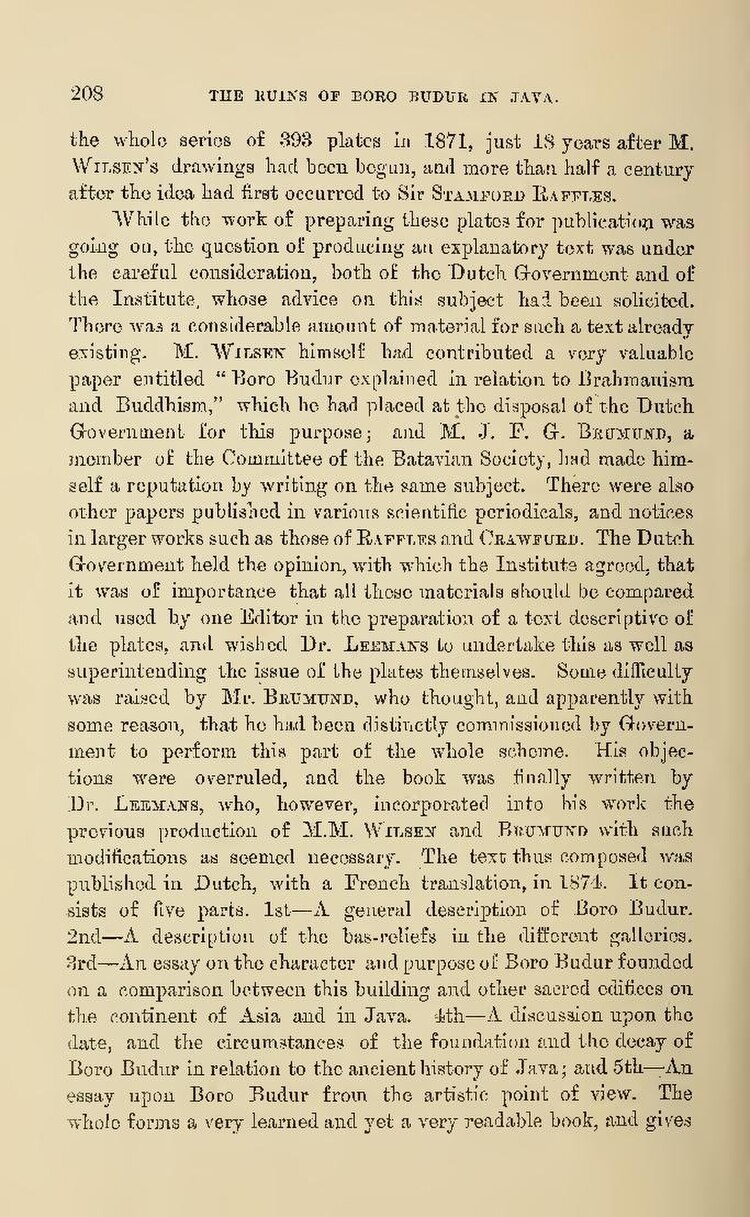the whole series of 393 plates in 1871, just 18 years after M. WILSEN's drawings had been begun, and more than half a century after the idea had first occurred to Sir STAMFORD RAFFLES.
While the work of preparing these plates for publication was going on, the question of producing an explanatory text was under the careful consideration, both of the Dutch Government and of the Institute, whose advice on this subject had been solicited. There was a considerable amount of material for such a text already existing. M. WILSEN himself had contributed a very valuable paper entitled "Boro Budur explained in relation to Brahmanism and Buddhism," which he had placed at the disposal of the Dutch Government for this purpose; and M. J. F. G. BRUMUND, a member of the Committee of the Batavian Society, had made him- self a reputation by writing on the same subject. There were also other papers published in various scientific periodicals, and notices in larger works such as those of RAFFLES and CRAWFURD. The Dutch Government held the opinion, with which the Institute agreed, that it was of importance that all these materials should be compared and used by one Editor in the preparation of a text descriptive of the plates, and wished Dr. LEEMANS to undertake this as well as superintending the issue of the plates themselves. Some difficulty was raised by Mr. BRUMUND, who thought, and apparently with some reason, that he had been distinctly commissioned by Government to perform this part of the whole scheme. His objections were overruled, and the book was finally written by Dr. LEEMANS, who, however, incorporated into his work the previous production of M.M. WILSEN and PRUMUND with such modifications as seemed necessary. The text thus composed was published in Dutch, with a French translation, in 1874. It consists of five parts. 1st—A general description of Boro Budur. 2nd—A description of the bas-reliefs in the different galleries. 3rd—An essay on the character and purpose of Boro Budur founded on a comparison between this building and other sacred edifices on the continent of Asia and in Java. 4th—A discussion upon the date, and the circumstances of the foundation and the decay of Boro Budur in relation to the ancient history of Java; and 5th—An essay upon Boro Budur from the artistic point of view. The whole forms a very learned and yet a very readable book, and gives
